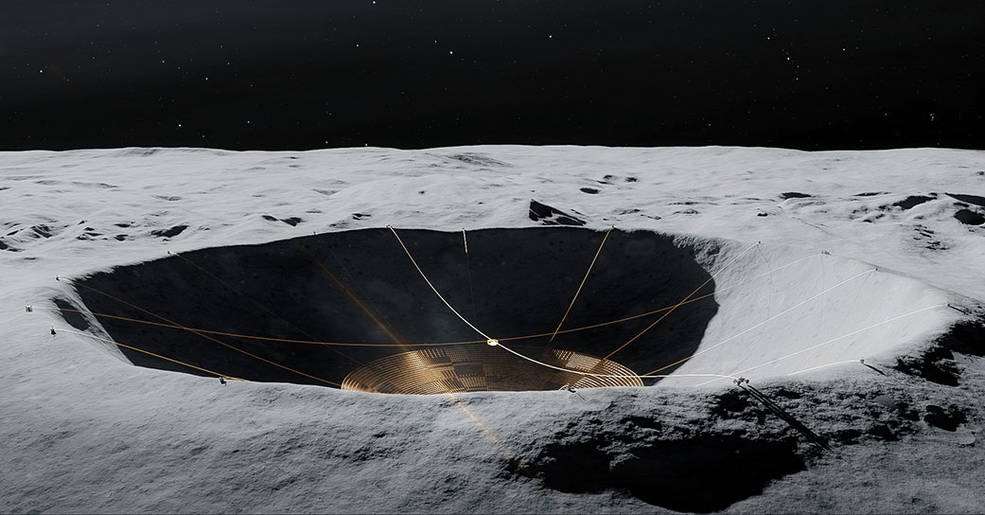We said recently that this year feels like it’s all about space and NASA’s news that it’s looking at building a radio telescope on the far side of the Moon does nothing at all to dull that impression. The space agency has cast its eye a little closer than Mars, where it’s performed all manner of feats this year so far, with the aim of further exploring the universe.
NASA is reaching out
NASA’s planning a piece of science equipment it calls the Lunar Crater Radio Telescope or LCRT. That’s exactly what it sounds like — a radio telescope build into a crater, only this one will live on the far side of the Moon. You know, the bit we never get to see from Earth?
So, first of all, it’ll face out into the universe and, secondly, it won’t have to contend with the planet’s atmosphere. Current radio ‘scopes battle with wavelengths longer than ten meters because of the planet’s ionosphere, explains the JPL’s Saptarshi Bandyopadhyay. He added, “[P]revious ideas of building a radio antenna on the Moon have been very resource intensive and complicated, so we were compelled to come up with something different.”
Get on my wavelength
In order to create this radio telescope, NASA’s going to wind up replicating the humble spider, more or less. The idea is that, instead of the reflective panels used in radio telescopes on Earth, the LCRT would be made from wire mesh. It would also be gigantic, about a kilometre across and built inside a crater about three kilometres wide.
In other to construct it, NASA will need the building material — chosen because it’s a little easier to transport than actual panels — and a robot capable of putting it together. That’ll be the job of DuAxel, a rugged robot made by the space agency that can separate while remaining connected. One side would act as an anchor, while the other wanders into the crater to construct the telescope.
But there are challenges ahead first. The materials needed for construction need to be researched further, and tested for use in varying lunar conditions. DuAxel’s role also needs to be fleshed out, possibly expanded upon and might call for “…[f]iring harpoons into the lunar surface” at some point. Which is just an awesome sentence to type. Investigation will continue over the next two years. If the idea’s viable, well… mankind might just Spider-Man a radio telescope on the Moon some day.
Header image: NASA/Vladimir Vustyansky




